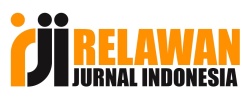Relationship between Collage Activities and Early Children’s Creativity
DOI:
https://doi.org/10.35719/gns.v4i2.131Keywords:
collage, creativity, early childhoodAbstract
This study aims to determine the relationship between college activities and early childhood creativity in the Islamic Kindergarten of Asy Syifa, Cikancung District, Bandung Regency. The method used in this study is the correlation method with a quantitative approach, sampling techniques using saturated sampling techniques, data collection techniques using observation, and data analysis using statistical formulas. This research is motivated by preliminary studies conducted in the Islamic Kindergarten of Asy Syifa that children's creativity is still low, evidenced by the average value obtained is 2.3, which is in the range of 1.75-2.49, which is interpreted to begin to develop. The activity that has been running in the learning process in the Islamic Kindergarten of Asy Syifa to train children's creativity is collage. Based on the analysis of college activity data obtained, an average value of 74.15 is categorized as good. Early childhood creativity obtained an average value of 2.78, categorized as developing according to expectations. Then the value of thing = 25.52 > table = 2.160 at a significant level of 5% interpreted Ho rejected, and Ha accepted means there is a significant relationship between college activities and early childhood creativity in the Islamic Kindergarten of Asy Syifa. It obtained a correlation coefficient of 0.99, which is interpreted as very strong. The contribution of collage activities to early childhood creativity was 98%, and other factors influenced 2%.
Abstrak
Penelitian ini bertujuan untuk mengetahui hubungan antara kegiatan membuat kolase dengan kreativitas anak usia dini di Raudhatul Athfal Asy Syifa yang berlokasi di Kabupaten Bandung, Indonesia. Metode yang digunakan dalam penelitian ini adalah metode korelasi dengan pendekatan kuantitatif, teknik pengambilan sampel menggunakan teknik sampling jenuh, teknik pengumpulan data menggunakan observasi, dan analisis data menggunakan rumus statistik. Penelitian ini dilatarbelakangi oleh hasil studi pendahuluan yang dilakukan di Raudhatul Athfal Asy Syifa bahwa kreativitas anak masih rendah, hal ini dibuktikan dengan nilai rata-rata yang diperoleh adalah 2,3 yang berada pada rentang 1,75 - 2,49 yang ditafsirkan Mulai Berkembang. Kegiatan yang berjalan dalam proses pembelajaran di Raudhatul Athfal Asy Syifa untuk melatih kreativitas anak adalah kolase. Berdasarkan hasil analisis data, kegiatan kolase memperoleh nilai rata-rata 74,15, dikategorikan Baik. Kreativitas anak usia dini memperoleh nilai rata-rata 2,78, dikategorikan Berkembang Sesuai Harapan. Kemudian nilai thitung = 25,52 > ttabel = 2,160 pada taraf signifikan 5% yang diinterpretasikan Ho ditolak dan Ha diterima, artinya terdapat hubungan yang signifikan antara kegiatan kolase dengan kreativitas anak usia dini di Raudhatul Athfal Asy Syifa. Diperoleh nilai koefisien korelasi sebesar 0,99 yang diinterpretasikan sangat kuat. Kontribusi kegiatan kolase terhadap kreativitas anak usia dini di Raudhatul Athfal Asy Syifa sebesar 98%, dan faktor lain mempengaruhi sebesar 2%.
References
Jamaris, Martini. New Orientations in Educational Psychology. Jakarta: Penamas Murni Foundation, 2010.
Khadijah. Early Childhood Cognitive Development: Theory and Development. Medan: Perdana Publishing, 2017.
Mulyani, Novi. Developing Early Childhood Creativity. Bandung: Remaja Rosdakarya, 2019.
Nancy, Beal. Secrets of Teaching Art to Children. Yogyakarta: Pripoenbooks, 2003.
Nurjatmika, Yusep. Variety of Daily Activities for Kindergarten. Yogyakarta: DIVA Press, 2012.
Pamadhi, Hajar, and Evan Sukardi S. Children's Art Skills. South Tangerang: Open University, 2021.
Regulation of the Minister of Education and Culture of the Republic of Indonesia on National Standards for Early Childhood Education, Pub. L. No. 137 (2014).
Rachmawati, Yeni, and Euis Kurniati. Strategies for Developing Creativity in Kindergarten Age Children. Jakarta: Department of National Education, 2005.
Rahyubi, Heri. Learning Theories and Motor Learning Applications. Bandung: Nusa Media, 2014.
Ramdhania, Ammy, and Triyuni. Asiikk... Playing While Creating. Yogyakarta: Grhatama Library, 2012.
Sit, Masganti, Khadijah, Fauziah Nasution, Sri Wahyuni, Rohani, Nurhayani, Ahmad Syukri Sitorus, Raisah Armayanti, and Hilda Zahra Lubis. Early Childhood Creativity Development: Theory and Practice. Medan: Perdana Publishing, 2016.
Solichah, Silvana, and Novidewi Ayusari. Collage Skills. Yogyakarta: Indopublika, 2017.
Sujono, Yuliani Nurani, E. Leony Tampiomas, Malpaleni Satriana, Eriva Syamsiatin, Opih Rofiah Zainal, Rita Rosmala, and Aprianti Yofita Rahayu. Cognitive Development Methods. 2nd ed. South Tangerang: Open University, 2021.
Sumanto. Development of Kindergarten Children's Art Creativity. Jakarta: Department of National Education, 2005.
Susanto, Ahmad. Early Childhood Development: An Introduction to Its Various Aspects. 1st ed. Jakarta: Kencana, 2014.
Law on the National Education System, Pub. L. No. 20 (2003).
Downloads
Published
How to Cite
Issue
Section
License
Copyright (c) 2023 Siti Sapaat

This work is licensed under a Creative Commons Attribution-ShareAlike 4.0 International License.
All articles published in GENIUS: Indonesian Journal of Early Childhood Education are licensed under a Creative Commons Attribution-ShareAlike 4.0 International License (CC BY-SA 4.0).
This license allows others to share (copy and redistribute) and adapt (remix, transform, and build upon) the material for any purpose, even commercially, as long as appropriate credit is given to the original author(s) and the source, and any derivative works are distributed under the same license as the original.












